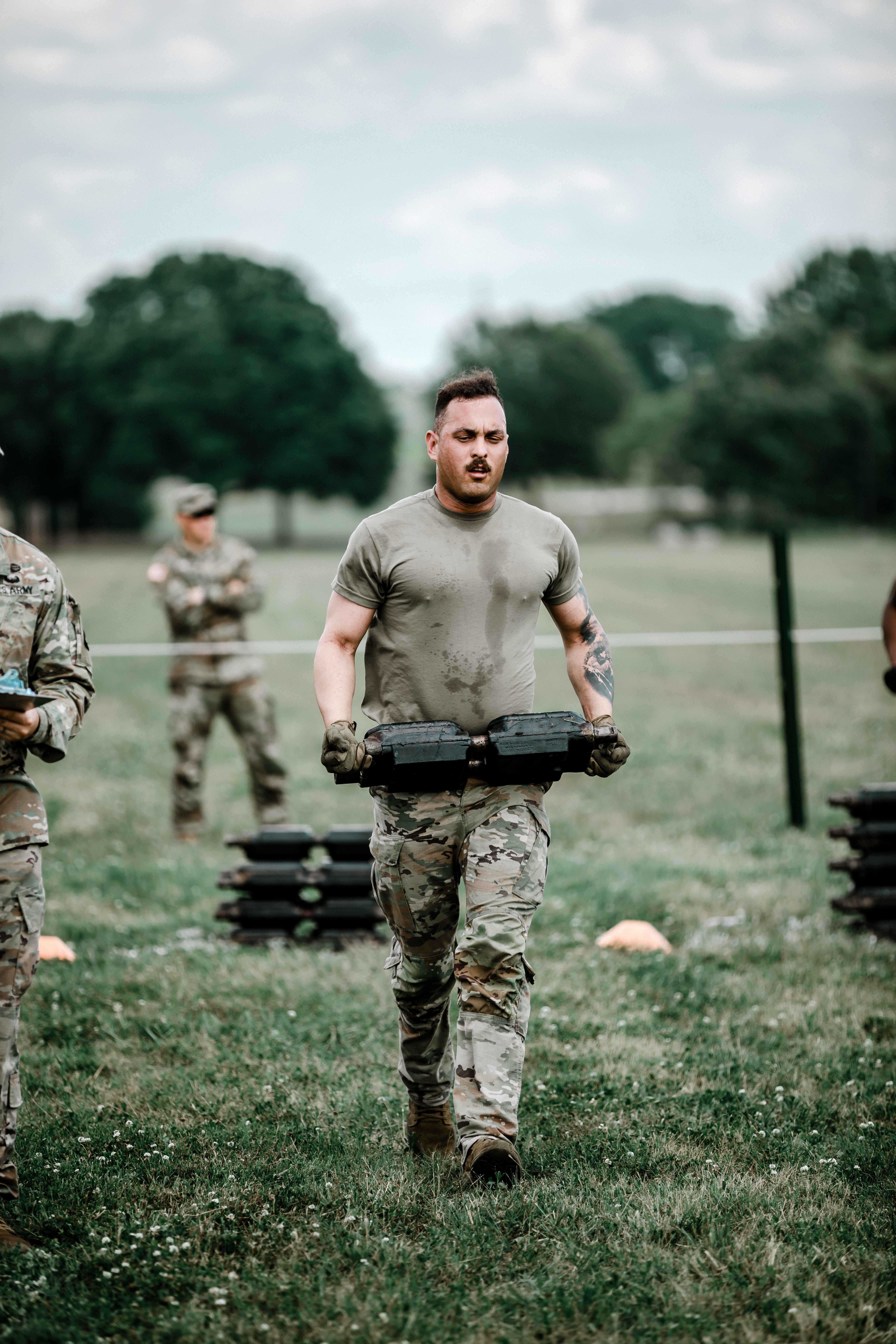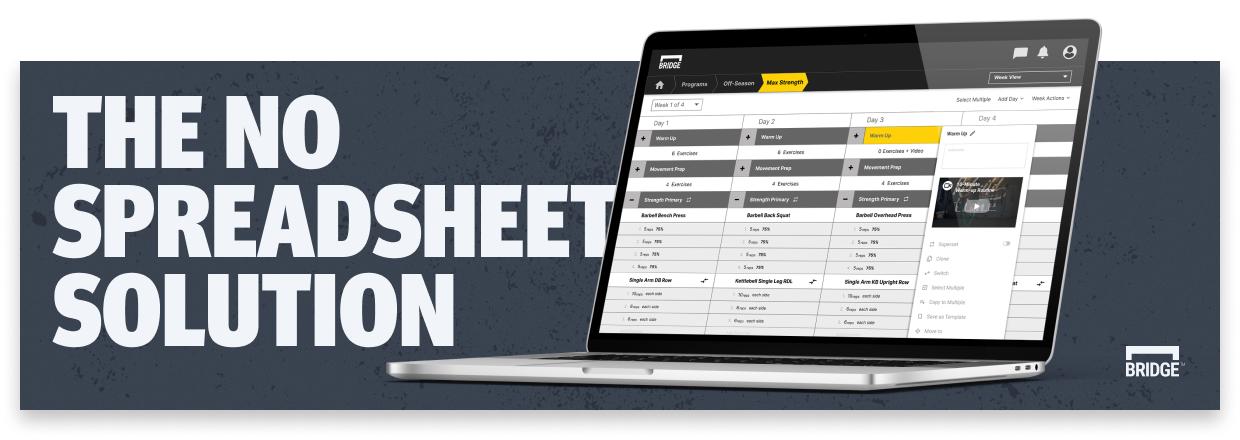The Tailor's Approach: Customizing Programs for Tactical Success
As someone who owns exactly one suit, this topic may seem significantly outside of my wheelhouse. And it is. However, my interest in learning about the most random things I come across led me to notice a point of comparison between the world of custom-made suits and my experience programming in the Tactical sector.
By taking some inspiration from this very different world of tailors, we can increase the utilization and buy-in of our services.
Human Performance departments in the Tactical world are relatively young in existence. As such, we are partially in the business of growth. We aim to grow the utilization and acceptance of this thing that we believe in very strongly. I have found this especially true in programs where utilization of services is optional and when working with individuals. In an ideal world, the results will speak for themselves.
The problem is that we are a time-dependent profession, and we need to keep them engaged with the training program long enough for the results to show, cementing their belief in the program.
In my curiosity driven viewing, I learned about the tailoring process that utilizes a consultation and fittings to create a quality suit. During this process, the tailor is both subject matter expert and customer service. During the consultation the tailor discovers the fit, style, and features that the customer wants. At this time, they also lend their knowledge and experience to offer guidance where needed. By doing so, the end result is a suit that is both skillfully made and pleasing to the customer. Similarly, we can utilize a version of this process to create a program that is both effective and enjoyable for the individual soldier.
As the tailor starts with measurements from the client, we start with testing metrics—objective numbers that illustrate the soldier's needs and will guide the programming for the best fit. This part is necessary to truly customize a program to an individual, but it also provides supporting evidence to the soldier as to what their program should aim at beyond their personal wants.
Each tailoring house has its own “house style.” This is essentially the cut, construction, and features that they believe to be their ideal. Similarly, we should have our own house programming. These are the programming styles that you have built and refined over the years of your career through your influences and experiences.
The means, methods, constructions, and progressions you have found work best for your population in your environment and are aligned with the goals of your department. This is the programming that you would put in place for your groups and for individuals coming in who have little to no preliminary preferences.
The tailor will have an initial consultation with the customer to determine their preferences in terms of fit, design, and features. This is where customization happens beyond just being a good fit. And this parallel is where I think we can make the biggest inroads to buy-in and happy “customers”. That is, with a program that they believe is truly tailored to them, for their needs and wants, and in a style that they enjoy. The importance is in the initial conversation and the questions that you ask.
Naturally, there will be questions regarding injury history, if they are currently experiencing any pain, and if there are any exercises that have presented problems in the past. These questions direct the programming and exercise selection but also serve as data points to dig into the why. Can we schedule a movement/technical analysis to see if we uncover technical deficiencies or mobility restrictions that are causing pain with these movements and possibly causing other issues as well? We could also suggest some quick testing to look at strength differentials relevant to the specific movement pattern. This is a good time to bring a physical therapist or athletic trainer into the conversation for a team approach.
We can start to get a good understanding of what they believe to be their needs with the following questions as examples. What things do you think you need to work on? What do you think are your strengths and areas for improvement? What are your training goals? This provides us with the information that motivated them to come talk to us about a program and what is initially important to them. It also presents an opportunity to go over testing results and marry their stated needs with what we are seeing in the metrics to give supporting evidence to what you believe is also needed.
Digging into training preferences with questions relating to their training history is key to delivering an enjoyable program for the individual. Some examples could be as follows:
What types of programs/methods have you had success with in the past or not had success with?
What kinds of programs/methods have you enjoyed or disliked?
What exercises do you really like or think are important for you?
What exercises do you hate?
You may have soldiers who have zero opinions on any of this. That is totally fine; the house style is a very good fit here. But for those who have a training history and enjoy digging into the subject a little, these questions will go a long way to creating a program that the individual believes in and enjoys from the jump.
Lastly, we can ask some practical questions to lay out a program that is feasible for the individual. Things like how many days a week, how much time per session, and what breakdown of lifting vs conditioning sessions do you prefer? One quick way for an individual to drop a program is to be overly ambitious when talking about what they want and then stop the program when they realize they can’t manage it at the time. I would usually ask what they realistically thought they could manage right now.
Then, if they ideally wanted to do more, I would make a deal that we would start off with the amount that they felt their schedule could currently allow and then increase after a month or two if they had more time than they thought. These questions also allow for discussion on behavioral habit strategies if they present themselves as a limitation or goal.
By taking the tailor’s approach to customizing programs for individuals, we give ourselves the possibility of further increasing utilization, retention, and satisfaction with our individuals. If you are in a place where the workload is maxed out and your staff doesn’t have the time for this approach, then that’s a different problem for a different article.
This article doesn’t aim to imply that you accept being dictated to, but rather that the soldier feels heard and your knowledge and expertise are elevated by giving them the safe and effective version of what they want. You don’t have to throw every detail of what they say into the program; the tailor guides their customer's wants. You don’t have to run someone else’s program, either.
By being a student of programming with familiarity with different styles and approaches, you can make it your own and create something that both you and the soldier believe in. This mutually beneficial scenario is one that is great for the overall growth of our program.
About the Author

Brian Sklenar has 14 years of experience as a strength and conditioning coach in the Tactical and Collegiate Athletics sectors. He spent the last four years in the Tactical sector working with USASOC and AFSOC. Prior to that Brian coached at Youngstown State University for eight years. He got his start interning for the Football Physical Preparation staff at the University of Pittsburgh.
Related Posts

Six Benefits of Exercise on Mental...
Exercise is not only vital for physical health but also plays a transformative role in mental...

4 Easy Steps to Launch and Sell a...
The holiday season offers a unique opportunity for personal trainers to reach more clients and...

4 Proven Offers to Attract Clients and...
Standing out in the competitive world of personal training and fitness coaching requires more than...



![Blog CTA Med.[button] - military - optimize](https://blog.bridgeathletic.com/hs-fs/hubfs/Blog%20CTA%20Med.%5Bbutton%5D%20-%20military%20-%20optimize.png?width=1240&height=570&name=Blog%20CTA%20Med.%5Bbutton%5D%20-%20military%20-%20optimize.png)